Hello, green-thumbs and fern lovers! Today, I want to embark on a new adventure with you, where we explore a corner of the plant kingdom that often doesn’t get the love and attention it deserves – the captivating world of ferns.
Table of Contents
Ferns – they’re like the unsung heroes of the plant world. These non-flowering plants have been around for more than 350 million years, and yet they’re frequently overlooked. It could be because they don’t produce showy blooms like roses or tulips. But if you ask me, that’s part of their charm. Their lush fronds and intricate patterns provide a sense of calm and relaxation, and their sheer diversity is genuinely mind-boggling.
There are over 10,000 identified types of ferns worldwide, ranging from tropical giants to delicate miniatures, each offering unique textures, sizes, and even colors. But don’t let that number intimidate you. Whether you’re a seasoned plant parent or just starting your botanical journey, I’m here to guide you through this green labyrinth.
Put on your gardening hat and get your favorite cup of tea (or coffee, if that’s your poison). We’re about to delve deeply into the world of ferns, learning about their variety, how to care for them, and why this group of plants is so fascinating.
Asparagus Fern Types
Embarking on the journey through different fern types, the Asparagus fern is sure to catch your eye. Renowned for its resilience and variety, this group stands out among indoor and outdoor greenery. Although its name might suggest otherwise, the Asparagus fern is not a true fern. Yet, it’s the vibrant green, fern-like foliage and hardiness that endear this plant to gardening enthusiasts all over the world.
Around the world, gardens and residences most frequently contain one of three varieties of asparagus ferns:
- Asparagus densiflorus ‘Sprengeri’: Perhaps the most well-known of the Asparagus ferns, this species showcases arching plumes of tightly packed, needle-like leaves, and it’s a star player in hanging baskets due to its attractive, trailing habit.

- Asparagus densiflorus ‘Myers’: Also known as the Foxtail fern, this type has denser, bushier fronds that resemble a fox’s tail. It’s an exceptional choice if you’re seeking a plant with a more sculptural, bold look.
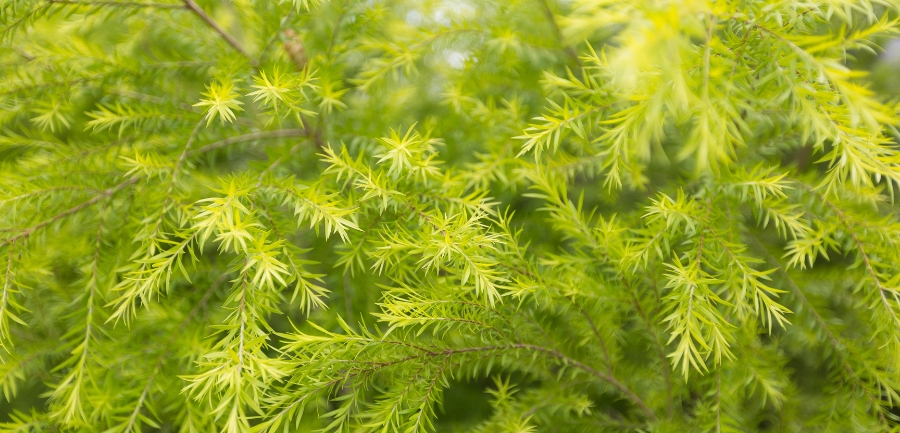
- Asparagus setaceus: Commonly referred to as the Lace fern or Climbing Asparagus, this species stands out with its feathery, soft fronds, offering a delicate, elegant aesthetic.
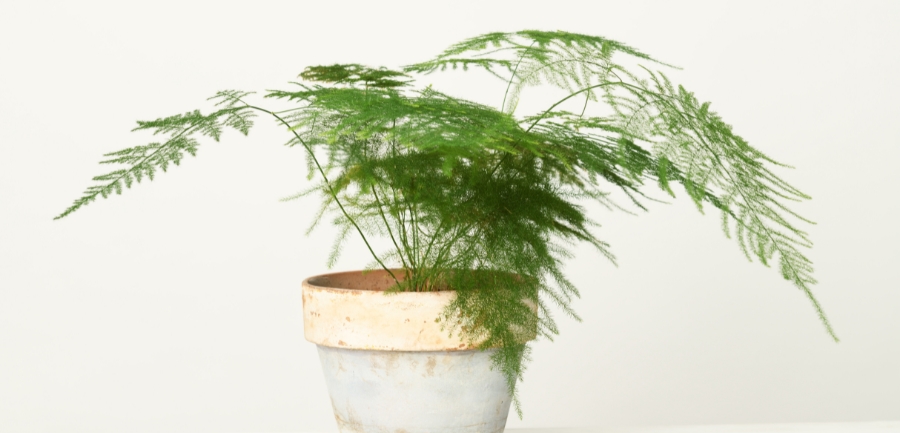
Each Asparagus fern type has its own charm and unique appeal, and their care requirements are largely similar, making them great choices for both novice and experienced plant enthusiasts. Explore these fantastic fern-like beauties, and you’re sure to find one (or more!) that fits perfectly in your garden or home.
Fern Plant Types
The group of plants known as ferns is diverse and can survive in a range of habitats, including tropical rainforests, frigid alpine regions, and dry deserts. Due to their versatility and variety, ferns make an excellent study subject. Let’s examine a few intriguing types:
- Boston Fern (Nephrolepis exaltata): A classic choice for indoor gardening, Boston ferns charm with their graceful, drooping fronds and delicate, feathery leaves. They’re perfect for hanging baskets or pedestals.

- Maidenhair Fern (Adiantum spp.): Known for their elegant, lacy fronds and wiry, black stems, Maidenhair ferns come in several varieties. They’re delicate beauties that demand careful attention but reward their caretakers with stunning visuals.
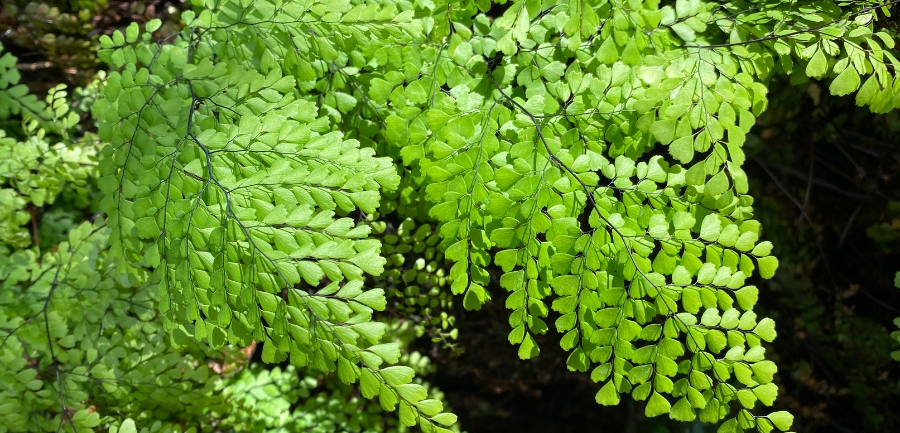
- Staghorn Fern (Platycerium spp.): These epiphytic ferns have unusual, antler-like fronds, making them a striking addition to any collection. They grow well mounted on wood or in hanging baskets.
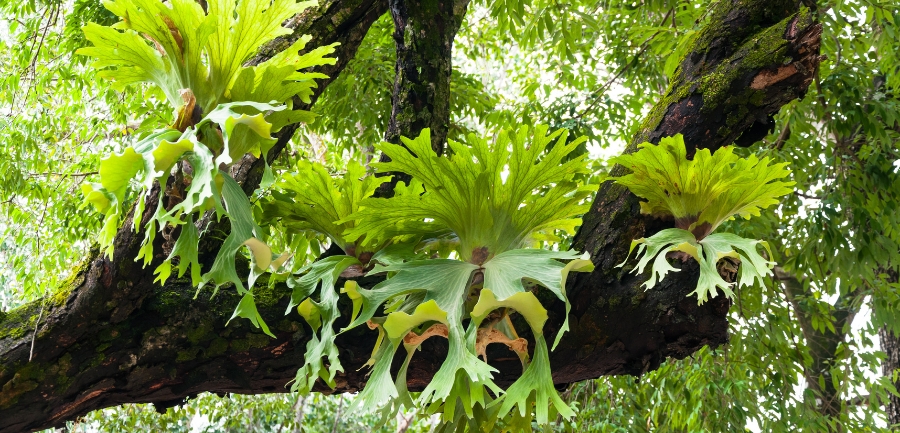
- Bird’s Nest Fern (Asplenium nidus): This fern boasts a unique growth pattern, with new fronds emerging from a central, nest-like rosette. Its broad, glossy leaves add an exotic touch to indoor spaces.

- Japanese Painted Fern (Athyrium niponicum): A popular choice for shaded outdoor gardens, this fern captivates with silver-gray fronds and purplish-red veins.

These types of fern plants only scratch the surface of the extensive world of ferns. They each bring something unique to the table, whether it’s their unusual shapes, beautiful fronds, or their ability to adapt to various conditions. Your fern journey has only just begun!
Different Types of Fern Plants
As we further delve into the diverse world of ferns, let’s marvel at the myriad forms, dimensions, and growth patterns these venerable plants display. Here’s a glimpse of a few additional types that wonderfully illustrate the remarkable variety within the realm of ferns:
- Lady Fern (Athyrium filix-femina): Recognized by its delicate, feathery fronds, the Lady Fern is a garden favorite. It’s highly adaptable and thrives in many climates.
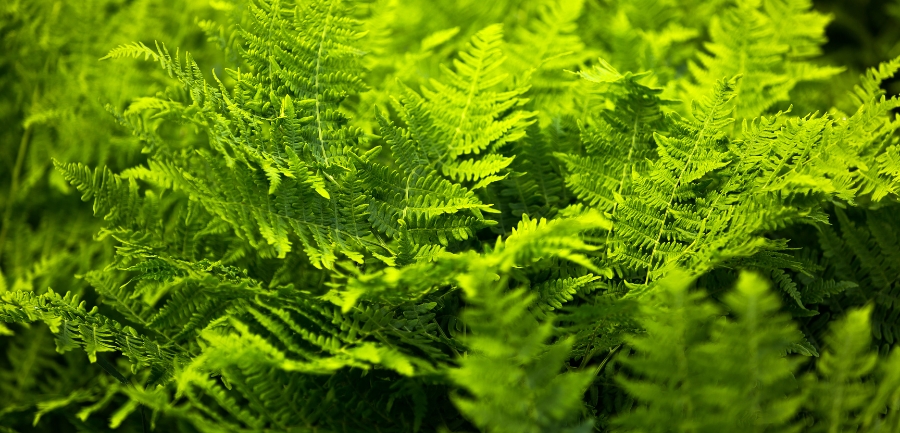
- Cinnamon Fern (Osmundastrum cinnamomeum): Named for the cinnamon-colored spore-bearing fronds in its center, this fern adds a pop of color to shaded gardens and landscapes.
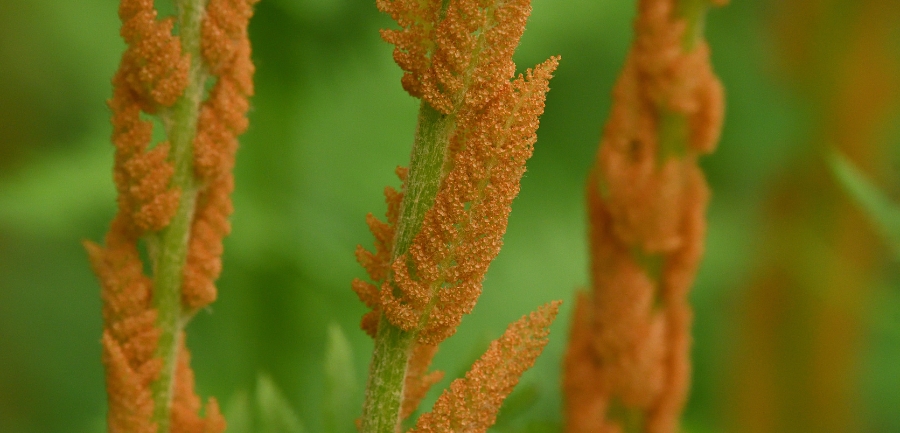
- Royal Fern (Osmunda regalis): One of the largest ferns, Royal Ferns can reach up to 6 feet in height! They have unique, broad fronds and thrive in moist environments, making them an excellent choice for pond edges or rain gardens.

- Sword Fern (Polystichum munitum): Known for their robust, erect fronds that resemble swords, these ferns are hardy and easy to care for, making them ideal for beginners.
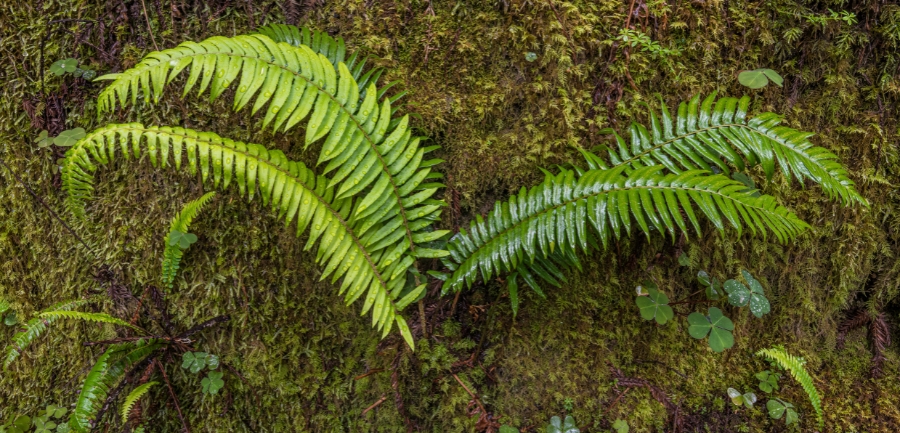
- Holly Fern (Cyrtomium falcatum): This evergreen fern is recognized by its shiny, dark green, holly-like fronds. It’s a favorite for both indoor and outdoor cultivation due to its striking appearance and resilience.
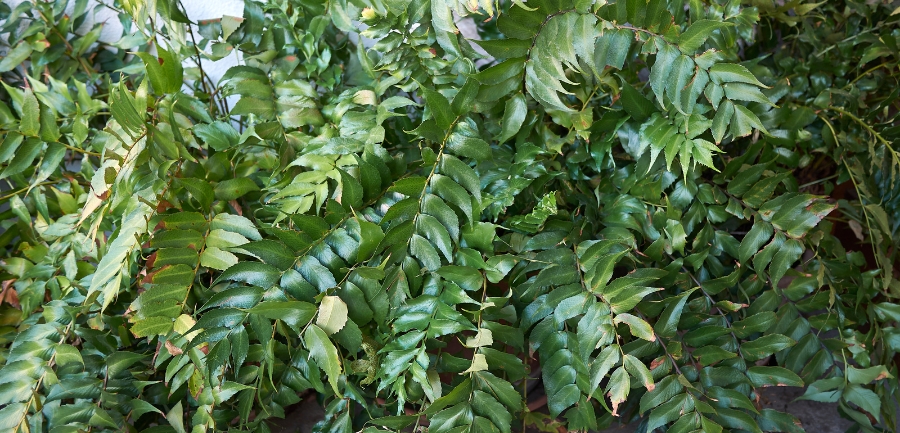
Examining the diverse types of fern plants enables us to further appreciate their adaptability, resilience, and aesthetic appeal. Whether you’re passionate about indoor plants, an avid outdoor gardener, or an individual deeply fascinated by botany, there’s undoubtedly a fern species ready to charm and captivate you.
Do Ferns Survive Winter?

Winter can be a challenging season for many plants. However, the hardiness of ferns often surprises garden enthusiasts. Many types of ferns can indeed survive the winter, though their survival strategies and appearance during the cold months depend on their species and environment.
Deciduous ferns, such as the Cinnamon Fern (Osmundastrum cinnamomeum) and the Lady Fern (Athyrium filix-femina), respond to winter by entering a dormant state. Their fronds die back with the first frost, and the plants rest until spring, when they sprout fresh, vibrant fronds.
On the other hand, evergreen ferns like the Christmas Fern (Polystichum acrostichoides) and the Holly Fern (Cyrtomium falcatum) retain their fronds throughout the winter, offering greenery even in snowy landscapes. They’re especially valued in garden designs for their year-round color.
Of course, not all ferns can tolerate extreme cold. Tropical ferns, often grown as houseplants, require warm, humid environments and should be protected from freezing temperatures.
If you’re considering adding ferns to your garden or indoor plant collection, understanding their winter behavior is key. With the right choice and proper care, you can enjoy the beauty of ferns all year round, even in winter.
Indoor Ferns: Bringing the Green Indoors

If you’re looking to add a touch of nature to your indoor spaces, ferns are an excellent choice. Their lush, feathery fronds can transform your home into a tranquil, green oasis. Here are a few types of ferns well-suited for indoor living:
- Boston Fern (Nephrolepis exaltata): Boston Ferns are a classic choice for indoor gardening due to their adaptability and stunning fronds. They prefer high humidity, making them perfect for bathrooms or kitchens.
- Maidenhair Fern (Adiantum spp.): Known for their delicate, lacy fronds, Maidenhair ferns can be a bit challenging to care for but reward you with unmatched elegance.
- Bird’s Nest Fern (Asplenium nidus): With its unique, ripple-edged fronds that emerge from a central rosette, the Bird’s Nest fern is a great conversation starter. It’s also one of the more forgiving ferns, tolerating lower-light conditions than most.
- Staghorn Fern (Platycerium spp.): The unusual, antler-like fronds of Staghorn ferns make them a striking choice for indoor displays. They love being mounted on wooden plaques, replicating their natural, epiphytic lifestyle.
- Button Fern (Pellaea rotundifolia): The Button Fern is a durable and easy-to-grow indoor plant, with cute, round leaves that line its arching fronds.
Indoor ferns not only enhance your home’s aesthetics but also purify the air and create a calming environment. With careful watering, sufficient humidity, and indirect light, these green beauties can thrive and bring joy to any indoor gardener.
FAQs
What is the most common type of fern?
The Boston Fern, scientifically known as Nephrolepis exaltata, ranks among the most prevalent fern varieties. Its appeal for both indoor and outdoor applications stems from its lush fronds, resembling feathers, and its admirable adaptability to various environments.
What are the 4 classes of ferns?
The four major classes of ferns are Polypodiopsida (true ferns), Marattiopsida (giant ferns), Equisetopsida (horsetails), and Psilotopsida (whisk ferns and adder’s-tongues).
How can I identify my fern?
Identify your fern by examining its fronds, sori pattern (spore-producing structures), and growth habit. Consult a field guide or use a plant identification app for assistance.
What is the rarest type of fern?
It is rare to find the Walking Fern (Asplenium rhizophyllum). It has a special way of growing that gives the impression that it is “walking” across surfaces since the leaf tips produce new plants.
To Wrap It Up!
As we conclude our deep dive into the fascinating world of ferns, it’s impossible not to feel a sense of awe for these ancient plants. From their sheer diversity, with over 10,000 identified species worldwide, to their impressive adaptability and resilience, ferns have proven to be an enduring part of our planet’s flora.
We’ve journeyed through lush forests with the popular Boston Fern, admired the delicate elegance of Maidenhair Ferns, and marveled at the unique features of Staghorn and Bird’s Nest Ferns. We’ve learned that some ferns, like the resilient Lady Fern and the Cinnamon Fern, can withstand the chill of winter, while others, like the Boston Fern and Button Fern, thrive indoors, purifying our air and greening our living spaces.
Whether you’re cultivating a vibrant outdoor garden or curating a calming indoor plant oasis, there’s a fern that can add a unique touch to your collection. Identifying and caring for ferns can be a rewarding challenge, giving you a deeper understanding and appreciation of these botanical marvels.
In the end, it’s the ferns’ ancient lineage, surprising variety, and understated beauty that make them such a captivating subject. Ferns remind us of the Earth’s enduring biodiversity and our interconnectedness with the natural world. So, here’s to celebrating and preserving our planet’s leafy treasures. Here’s to the fascinating world of ferns!

